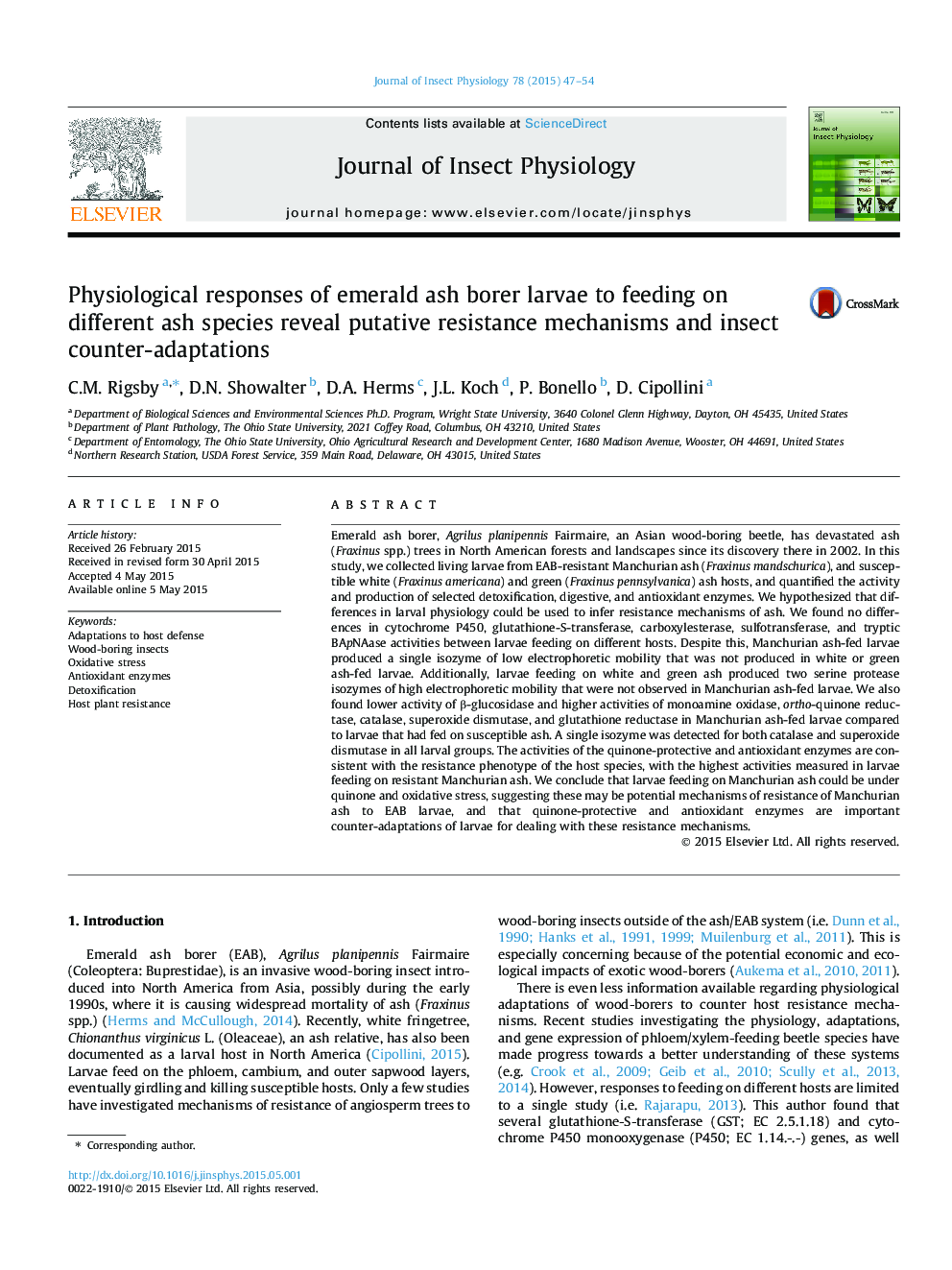| Article ID | Journal | Published Year | Pages | File Type |
|---|---|---|---|---|
| 2840351 | Journal of Insect Physiology | 2015 | 8 Pages |
•Emerald ash borer physiological responses to different ash (Fraxinus spp.) were quantified.•Antioxidant enzyme activity was higher in larvae fed the resistant ash.•Quinone protective enzyme activity was higher in larvae fed the resistant ash.•β-Glucosidase activity was lower in larvae fed the resistant ash.•Resistance may involve quinone and reactive oxygen species-generation.
Emerald ash borer, Agrilus planipennis Fairmaire, an Asian wood-boring beetle, has devastated ash (Fraxinus spp.) trees in North American forests and landscapes since its discovery there in 2002. In this study, we collected living larvae from EAB-resistant Manchurian ash (Fraxinus mandschurica), and susceptible white (Fraxinus americana) and green (Fraxinus pennsylvanica) ash hosts, and quantified the activity and production of selected detoxification, digestive, and antioxidant enzymes. We hypothesized that differences in larval physiology could be used to infer resistance mechanisms of ash. We found no differences in cytochrome P450, glutathione-S-transferase, carboxylesterase, sulfotransferase, and tryptic BApNAase activities between larvae feeding on different hosts. Despite this, Manchurian ash-fed larvae produced a single isozyme of low electrophoretic mobility that was not produced in white or green ash-fed larvae. Additionally, larvae feeding on white and green ash produced two serine protease isozymes of high electrophoretic mobility that were not observed in Manchurian ash-fed larvae. We also found lower activity of β-glucosidase and higher activities of monoamine oxidase, ortho-quinone reductase, catalase, superoxide dismutase, and glutathione reductase in Manchurian ash-fed larvae compared to larvae that had fed on susceptible ash. A single isozyme was detected for both catalase and superoxide dismutase in all larval groups. The activities of the quinone-protective and antioxidant enzymes are consistent with the resistance phenotype of the host species, with the highest activities measured in larvae feeding on resistant Manchurian ash. We conclude that larvae feeding on Manchurian ash could be under quinone and oxidative stress, suggesting these may be potential mechanisms of resistance of Manchurian ash to EAB larvae, and that quinone-protective and antioxidant enzymes are important counter-adaptations of larvae for dealing with these resistance mechanisms.
Graphical abstractFigure optionsDownload full-size imageDownload as PowerPoint slide
